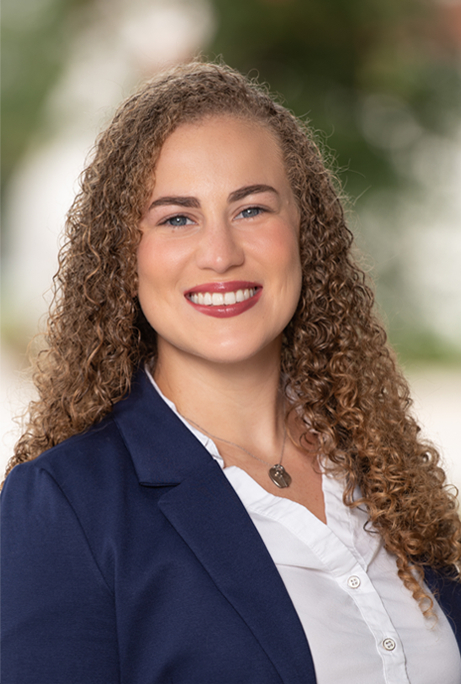What if the punch line is – CMI Doesn’t Have the Source Code?
The DUI Attorneys at the Sammis Law Firm are currently in the middle of a hearing to obtain the source code of the Intoxilyzer 8000 from the State of Florida. It is our position that if the State Attorney’s Office can’t produce it then the remedy should be that the breath test results for each of our clients cannot be used at trial.
Since the FDLE Alcohol Testing Program and CMI wants us to believe that the mysterious machine works just fine they are asking us to draw a lot of conclusions in their favor.
Florida Confused About The Right to Even View the Source Code
On February 2, 2009, the FDLE filed an Amended Petition for Declaratory Judgment in the Circuit Court of Leon County because it is “in doubt as to their rights and obligations with respect to ownership and use of source code and other information that is alleged by CMI to be copyright protected as well as confidential and proprietary trade secrets.”
FDLE is seeking a determination by the Circuit Court of Leon County as to the ownership rights to the source code and other confidential and proprietary information and FDLE’s obligation, if any to disclose the source code and other confidential and proprietary information.
Sure, the litigation was just FDLE’s attempt to get some support for its position, but this lawsuit demonstrates the problem for FDLE’s “no ask, don’t tell” policy.
CMI’s License Agreement Makes Clear it May NOT Have the Source Code
CMI’s Standard Software License Agreement provides:
- “CMI makes no express, implied or statutory warranty, that the licenses software or its use, shall be free from infringement of patent, copyright or other intellectual property right claims.”
- “CMI or anyone else who has been involved in the preparation of the licensed software shall not be liable for indirect, special or consequential damages…”
- “CMI” is defined as “the author and copyright owner, or Licensor of this software….”
The language in CMI’s Standard Software License Agreement seems to suggest that someone other than CMI was involved in preparing the software and that CMI may only have a license to use the software. In other words, CMI could have contracted with another company to develop the “source code” and the Florida specific software.
But what if CMI doesn’t have an unencrypted version of the “source code” for the machines that it manufactures, because that software may have been developed by another subsidiary company of MPD, Inc. If they keep the “source code” on MPD’s side of the building then CMI can claim it doesn’t have it. Or maybe they don’t even keep it in the United States.
Lion Laboratories Limited – Sister Company to CMI, Inc
The safest place to store it might be in a vault at Lion Laboratories Limited, based in Barry, Wales, United Kingdom. Lion Laboratories is a subsidiary company of MPD, Inc. and a sister company to CMI, Inc. – both MPD and CMI are located in Owesboro, Kentucky.
Lion Laboratories Limited manufactures a broad range of breath alcohol testing instruments that use fuel cell sensors (a technology pioneered by Lion) and infrared spectrometry. According to the MPD, Inc., website – Lion and CMI represent the “largest organization in breath alcohol analysis in the world today, a field in which they are entirely specialized.”
The Lion Intoxilyzer 8000 Looks Familiar
More evidence that the “source code” was developed by Lion Laboratories Limited in England. Take a look at their website which shows the Lion Intoxilyzer 8000 which looks just like the CMI Intoxilyzer 8000 (except for the logo). Both are marketing as the “first of a new breed of evidential breath alcohol instruments. This is the world’s first portable twin wavelength infrared analyser designed specifically as a portable evidential.”
The main difference is that the marketing material for the Lion Intoxilyzer 8000 uses the metric system and kilograms while the CMI Intoxilyzer 8000 uses American measurement standard the pound. Consider the Lion Intoxilyzer 8000 marketing material:
Weighing in at under 7Kg, the 8000 is equally at home running off a 12V vehicle supply as the 220/240V mains. It will even run off it’s own on-board rechargeable battery for total flexibility of use. The fold-down laptop style keyboard offers full control of the system while the 40 character display and the built-in printer provide the user interface information and the evidential print-outs. This is a truly mobile system, it will sit in a patrol car or police van and provide you with the same quality of results as Lion’s stationary evidential units.
Now that we have been listening for years to the State of Florida claim not to have the source code, wouldn’t it be interesting if CMI starts to use that excuse. “Welcome to Owensboro, Kentucky. Oh, you mean an unencrypted version of the source code? Oh sorry, we don’t have the unencrypted version… try asking that company in the United Kingdom or you might look in Singapore.”
Read More Similar Fights for the “Intoxyliser Source Code” in Ireland Against Lion Laboratories Limited
Apparently, similar battles for the source code were ongoing in Europe as well. Although they spell it “INTOXYLISER” instead of “INTOXILYZER” the legal issues otherwise appear to be similar. In Ireland, two of the solicitors who raised the issue are Ms. Cathy McDarby and Mr. Kieran Kelly who were fighting in Ballinrobe, Ireland, over the “Intoxyliser source code” for “drink-driving” cases for years. (You have to love those European terms like “drink-driving”).
If anyone knows the result of that litigation, we would love to know more about the details. We would also like to see the pleadings and orders in those cases or any other cases in Europe dealing with Lion Laboratories Limited.
EXCITING UPDATE!!! 7/21/10 at 5:21 p.m. – Guess who called me today? Ms. Cathy McDarby from Ireland! She said that Mr. Kieran Kelly was the prosecutor (not a defense attorney). She indicated that after having her DUI cases backlogged for years, the issue was ultimately not resolved in her favor. No one ever saw the “source code.” Although she did indicate that in her area the officers rarely uses the Lion Intoxyliser and have moved instead to blood or urine tests. This is why I love the internet. You can find an answer to any question just by asking. I’ll report more on what happened in Ireland with the challenges soon.
Additionally, Lion Laboratories probably recognizes the important of keeping their “source code” under lock and key. Consider the ruling in a 1985 UK case, Lion Laboratories v Evans, [1984] 2 All ER 417, [1985] QB 526. Lion Laboratories manufactured a device called the “Lion Intoximeter.” The intoximeter was used by the police for measuring blood alcohol levels of motorists accused of drunk driving. Two ex-employees approached the press with four documents taken from Lion Laboratories.
Those four documents showed that the Lion Intoximeter had serious faults which could have resulted in a significant number of motorists being wrongly convicted. Lion Laboratories immediately brought suit their ex-employees and Express Newspapers Limited to restrain disclosure of the information as to the devices “faults.” Lion Laboratories first obtained an interlocutory injunction restraining breach of confidence and infringement of copyright. However, the defendants appealed and were able to overturn the injunction based on their public interest “defences.”
Held: The Court of Appeal held that since the documents contained confidential information it would have been a breach of confidence to publish the information in them and an infringement of copyright to publish the documents themselves unless there were defences which permitted that in the public interest.
Stephenson LJ – The judge was “right to make no difference between confidence and copyright for the purposes of this case” and “The problem before the judge and before this court is how best to resolve, before trial, a conflict of two competing public interests. The first public interest is the preservation of the right of organisations, as of individuals, to keep secret confidential information.
The courts will restrain breaches of confidence, and breaches of copyright, unless there is just cause or excuse for breaking confidence or infringing copyright. The just cause or excuse with which this case is concerned is the public interest in admittedly confidential information.
There is confidential information which the public may have a right to receive and others, in particular the press, now extended to the media, may have a right, and even a duty to publish, even if the information has been unlawfully obtained in flagrant breach of confidence and irrespective of the motive of the informer.
The duty of confidence, the public interest in maintaining it, is a restriction on the freedom of the press which is recognised by our law, as well as by article 10(2) of the Convention for the Protection of Human Rights and Fundamental Freedoms (1953) (Cmd. 8969); the duty to publish, the countervailing interest of the public in being kept informed of matters which are of real public concern, is an inroad on the privacy of confidential matters.”
There were four considerations. “. . .The public are interested in many private matters which are no real concern of theirs and which the public have no pressing need to know. Secondly, the media have a private interest of their own in publishing what appeals to the public and may increase their circulation or the numbers of their viewers or listeners; . . .
Thirdly, there are cases in which the public interest is best served by an informer giving the confidential information, not to the press but to the police or some other responsible body. . . . Fourthly . . . “there is no confidence as to the disclosure of iniquity”: and in 1984 extends to serious misdeeds or grave misconduct, he submits that misconduct of that kind is necessary to destroy the duty of confidence or excuse the breach of it, and nothing of that sort is alleged against the plaintiffs in the evidence now before the court.” and “What makes this case so special is that the plaintiffs’ right to keep inviolate the secrecy of the information which the defendants wish to publish is undisputed, and the only question for interlocutory decision is whether that right is outweighed by the public interest, not in exposing persons who may be guilty of offences for which they have not been punished, but in disclosing the risk of the plaintiffs being instrumental in punishing other people for offences which they may not have committed.”
“The issue raised by the defendants is a serious question concerning a matter which affects the life, and even the liberty of an unascertainable number of Her Majesty’s subjects and though there is no proof that any of them has been wrongly convicted on the evidence of the plaintiffs’ Intoximeter, and we certainly cannot decide that any has, we must not restrain the defendants from putting before the public this further information as to how the Lion Intoximeter 3000 has worked, and how the plaintiffs regard and discharge their responsibility for it, although the information is confidential and was unlawfully taken in breach of confidence.”
Griffiths LJ- “The first question to be determined is whether there exists a defence of public interest to actions for breach of confidentiality and copyright, and if so, whether it is limited to situations in which there has been serious wrongdoing by the plaintiffs – the so-called ‘iniquity’ rule.
I am quite satisfied that the defence of public interest is now well established in actions for breach of confidence and, although there is less authority on the point, that it also extends to breach of copyright: see by way of example Fraser v Evans [1969] 1 QB 349; Hubbard v Vosper [1972] 2 QB 84; Woodward v Hutchins [1977] 1 WLR 760 and British Steel Corporation v Granada Television Ltd [1981] AC 1096.
I can see no sensible reason why this defence should be limited to cases in which there has been wrongdoing on the part of the plaintiffs. I believe that the so-called iniquity rule evolved because in most cases where the facts justified a publication in breach of confidence, it was because the plaintiff had behaved so disgracefully or criminally that it was judged in the public interest that his behaviour should be exposed.
No doubt it is in such circumstances that the defence will usually arise, but it is not difficult to think of instances where, although there has been no wrongdoing on the part of the plaintiff, it may be vital in the public interest to publish a part of his confidential information. Stephenson LJ has given such an example in the course of his judgment.
I therefore agree with Leonard J that it is not an essential ingredient of this defence that the plaintiffs should have been guilty of iniquitous conduct”.
Conclusion:
Why have we always assumed that CMI even has the source code? It may turn out that they cleverly decided to keep it under lock and key in the United Kingdom in a secret vault at Lion Laboratories Limited.
In any event, we don’t know. Criminal defense attorneys in Florida should not be required to solve the mystery. If the State of Florida decided to do business with CMI then perhaps the State of Florida and specifically Laura Barfield, the voice of the FDLE Alcohol Testing Program, should unlock the mystery or cease using the Intoxilyzer 8000 in the State of Florida.
Free Consultation
Submit this form to request a free and confidential consultation with one of our attorneys.
Our Office Locations
Tampa Office:
Sammis Law Firm, P.A.
1005 N. Marion St.
Tampa, FL 33602
(813) 250-0200
New Port Richey Office:
Sammis Law Firm, P.A.
7509 Little Rd.
New Port Richey, FL 34654
(727) 807-6392
Clearwater Office:
Sammis Law Firm, P.A.
14010 Roosevelt Blvd. #701
Clearwater, FL 33762
(727) 210-7004












